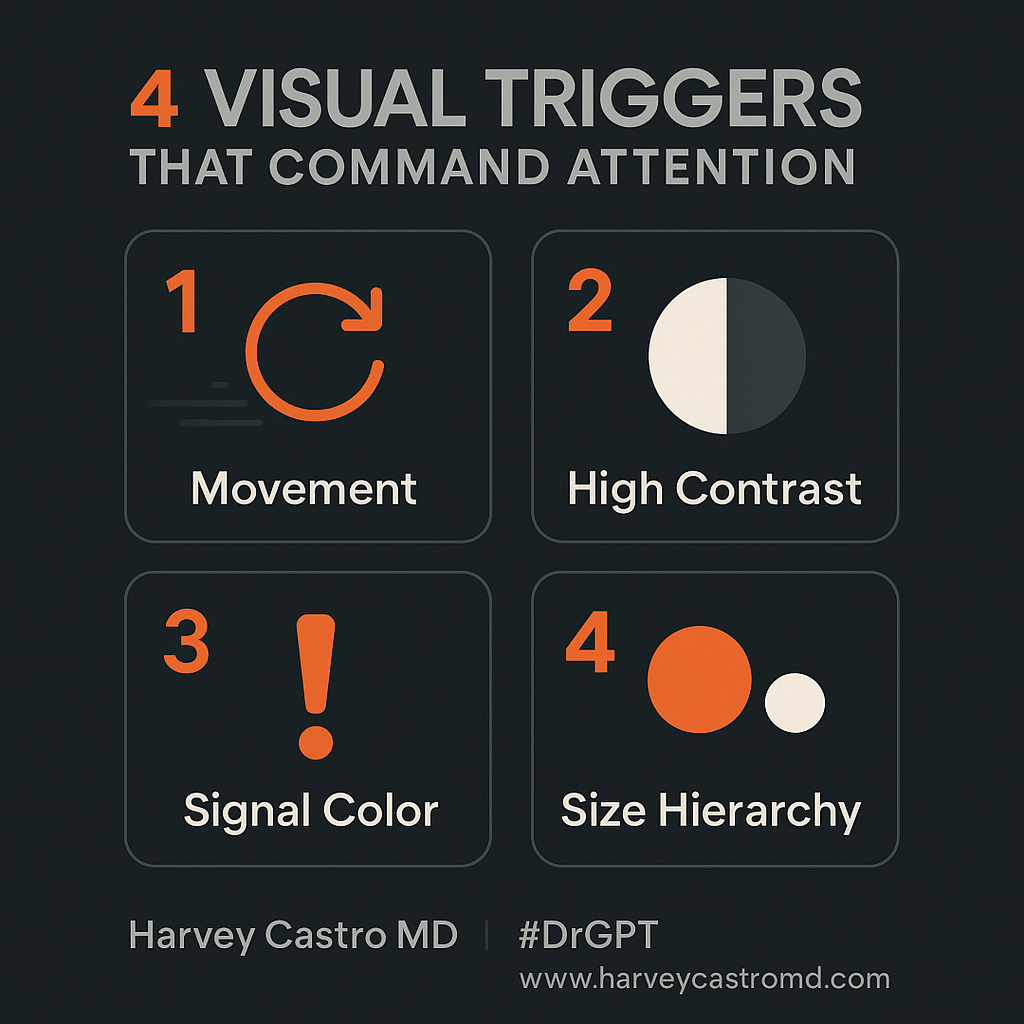
As health care professionals, we are constantly immersed in data, intricate details, and complex ideas. Whether presenting at grand rounds, sharing research at conferences, or explaining treatment plans to patients, your PowerPoint slides can either amplify your message or obscure it in a deluge of information.
Let’s be clear: Effective communication is not merely a desirable trait; it is a clinical necessity. Communication breakdowns are consistently linked to misdiagnoses, suboptimal patient outcomes, and missed opportunities for groundbreaking innovation. This critical truth extends directly to how we utilize presentation tools, such as PowerPoint.
So, how do we avoid what is commonly referred to as “death by PowerPoint”—a scenario where information overload leads to disengagement and diminished understanding?
Drawing from established principles of cognitive science and effective communication, we can transform your next presentation into a compelling, clear, and cognitively optimized experience. These principles are not about flashy design: They are about leveraging how the human brain processes information to maximize retention and impact.
Core principles for impactful slides
Effective slide design is rooted in understanding how the brain processes visual and textual information. By adhering to a few fundamental principles, you can significantly enhance the clarity and memorability of your presentations.
One message per slide: the principle of singular focus
The human brain, specifically the prefrontal cortex, excels at focusing on one primary piece of information at a time. When you attempt to convey multiple messages on a single slide, you create internal competition for attention, which hinders comprehension and recall.
Actionable insight: Dedicate each slide to one singular, clear idea. If you have two distinct points, create two separate slides. This disciplined approach ensures that your audience’s attention remains fixed on the critical message you wish to convey at that moment.
Avoiding the redundancy trap: the peril of simultaneous processing
A common and detrimental practice is reading complete sentences directly from slides while they are displayed. This phenomenon, known as the “redundancy effect,” overloads working memory. When an audience can both read and hear the same information simultaneously, their cognitive resources are inefficiently utilized, leading to significantly reduced retention.
Actionable insight: Eliminate complete sentences from your slides. Instead, use concise keywords, phrases, or impactful visuals to convey your message effectively. Your detailed narrative and supporting information belong in your presenter notes, to be delivered verbally, not duplicated on screen.
Strategic use of size: Guiding the eye to importance
Our eyes are naturally drawn to specific visual cues: movement, contrast, size, and color signals. It is a common design oversight that headlines are often the most significant element on a slide by default; however, unless your slide’s title is the core takeaway message, that prominent visual space should be reserved for the most critical information you wish to impart.
Actionable insight: Make your primary message or key data point the most significant, most visually dominant element on the slide. Proportionally reduce the size of the headline or other less critical elements. This design strategy visually reflects the hierarchy of importance: It intuitively guides the audience’s gaze.
Contrast as a visual pointer: Directing attention effectively
Studies in perception demonstrate that contrast acts as a powerful visual cue, much like a laser pointer. High-contrast slides effectively direct the audience’s focus precisely where you intend it to go.
Actionable insight: Employ dark backgrounds with light text whenever feasible. Dark backgrounds reduce screen glare, minimize eye strain for the audience, and enable the presenter to remain the primary visual focal point in the room. In contrast, bright slides can often inadvertently compete with the speaker for attention.
The cognitive limit of six: Managing information load
Cognitive load increases significantly when more than six distinct objects (e.g., icons, bullet points, images) are presented on a single slide. Beyond this threshold, the brain transitions from effortless recognition to a more effortful manual counting process, which diminishes immediate comprehension and long-term retention.
Actionable insight: Limit the number of distinct visual elements on any given slide to a maximum of six. If your content necessitates presenting more than six items, divide them across multiple slides. This approach prioritizes clarity over perceived conciseness.
Beyond slides: the comprehensive communication framework
While slide design is crucial, effective communication encompasses much more than just visuals. A truly impactful presentation integrates verbal and non-verbal cues to create a cohesive and memorable experience.
Physical presence
Your physical presence has a significant impact on how your message is received. Vary your voice control in terms of pitch, volume, and pace to maintain audience attention and emphasize key points. A monotone delivery can quickly lead to disengagement. Similarly, authentic facial expressions convey emotion and underscore the meaning of your message. Employ open gestures and posture to enhance your credibility and foster a sense of trust and connection with your audience.
Understanding audience psychology
Humans are inherently wired for storytelling. Weaving relevant narratives into your presentation can trigger neurochemical responses that enhance focus (dopamine), foster connection (oxytocin), and even create a sense of urgency (cortisol). The emotional framing you establish also profoundly influences the cognitive framework of your audience. A calm, confident, and empathetic demeanor can foster better recall and greater receptivity to your message.
Adapting for the digital age: 2024-2025 updates
The landscape of medical presentations is continuously evolving, with digital and hybrid formats becoming increasingly prevalent. Adapting your approach to these settings is essential for maintaining engagement and impact.
Webinar engagement
To combat screen fatigue in virtual settings, incorporate movement (e.g., dynamic webcam gestures), utilize interactive polls, and plan moments of audience interaction every few minutes to keep participants engaged. These strategies break the passive viewing cycle and encourage active participation.
Mobile-first design
A growing number of attendees access presentations on their mobile devices. Design your slides with mobile readability in mind: Use large, legible fonts, ensure high contrast between text and background, and minimize the number of elements per slide.
Interactive elements
Leverage modern digital tools to enhance your experience. Embed short video clips directly into your presentation, create clickable summaries for complex information, and integrate audience response platforms (such as Slido or Poll Everywhere) to facilitate dynamic, participatory sessions.
A quick implementation checklist
- One clear message per slide.
- No complete sentences – use only visuals or keywords.
- Key content is the most significant visual element.
- Utilize dark backgrounds for optimal contrast control.
- Limit to six visual elements per slide.
- Plan your delivery: Consciously consider your posture, tone, and storytelling approach.
- Tailor your presentation to suit digital or hybrid settings.
- Design your slides with mobile viewing in mind.
Final reflection: You are the presentation
Ultimately, presentation tools are precisely that: tools. They are designed to support and amplify your message, not to overshadow it. Your invaluable medical expertise deserves to be in the spotlight, not obscured by pixelated slides, overwhelming text, or an excess of bullet points. When you master the art of communicating both visually and emotionally, you achieve more than just sharing data: You effectively change minds, inspire action, critically improve patient care, and advance medical knowledge. It is time to elevate your presentation mastery.
This post was inspired by the TEDx talk Death by PowerPoint.
Harvey Castro is a physician, health care consultant, and serial entrepreneur with extensive experience in the health care industry. He can be reached on his website, harveycastromd.info, Twitter @HarveycastroMD, Facebook, Instagram, and YouTube. He is the author of Bing Copilot and Other LLM: Revolutionizing Healthcare With AI, Solving Infamous Cases with Artificial Intelligence, The AI-Driven Entrepreneur: Unlocking Entrepreneurial Success with Artificial Intelligence Strategies and Insights, ChatGPT and Healthcare: The Key To The New Future of Medicine, ChatGPT and Healthcare: Unlocking The Potential Of Patient Empowerment, Revolutionize Your Health and Fitness with ChatGPT’s Modern Weight Loss Hacks, Success Reinvention, and Apple Vision Healthcare Pioneers: A Community for Professionals & Patients.



















![How genetic testing redefines motherhood [PODCAST]](https://kevinmd.com/wp-content/uploads/Design-3-190x100.jpg)
![A leader's journey through profound grief and loss [PODCAST]](https://kevinmd.com/wp-content/uploads/The-Podcast-by-KevinMD-WideScreen-3000-px-4-190x100.jpg)



